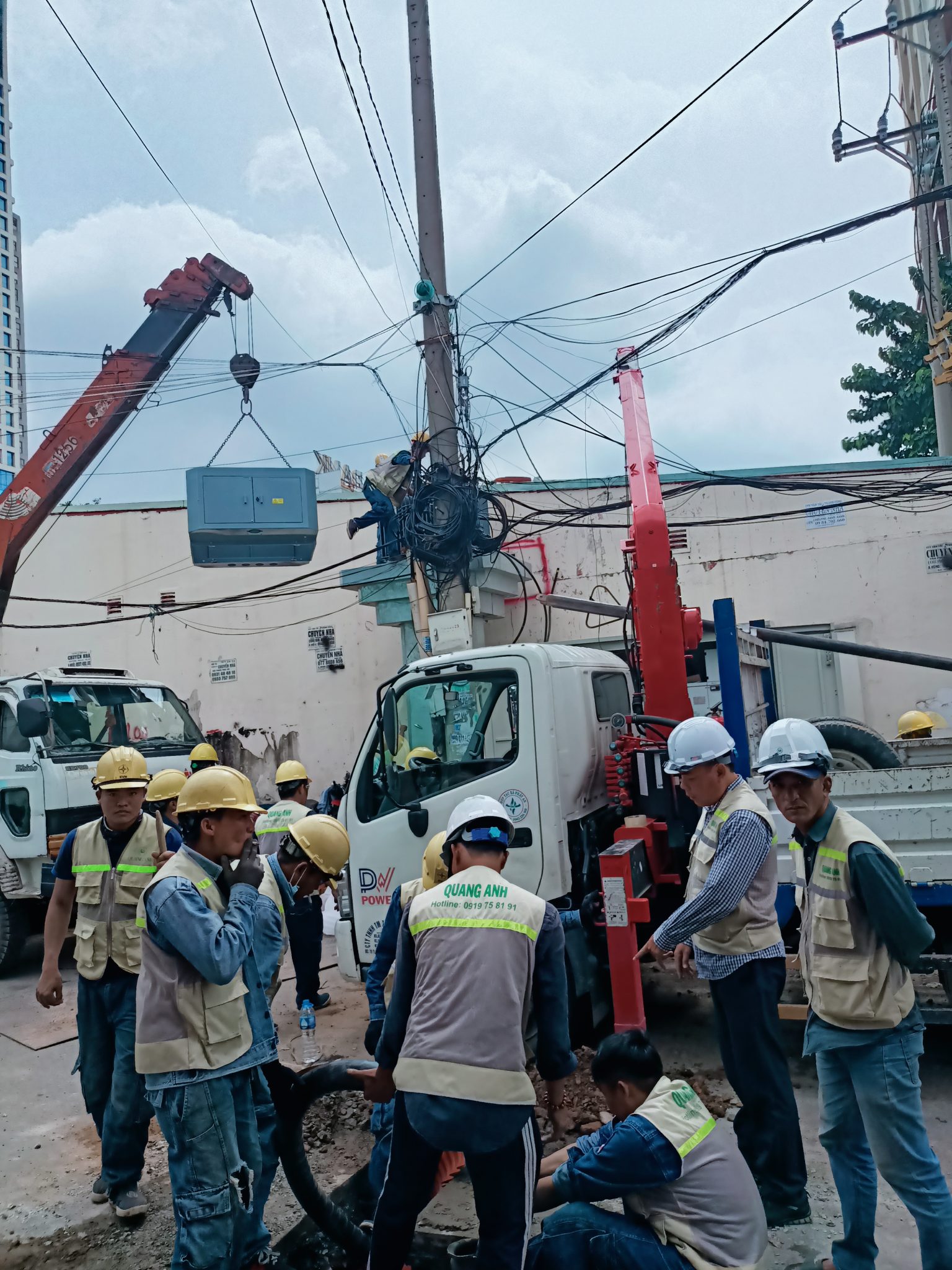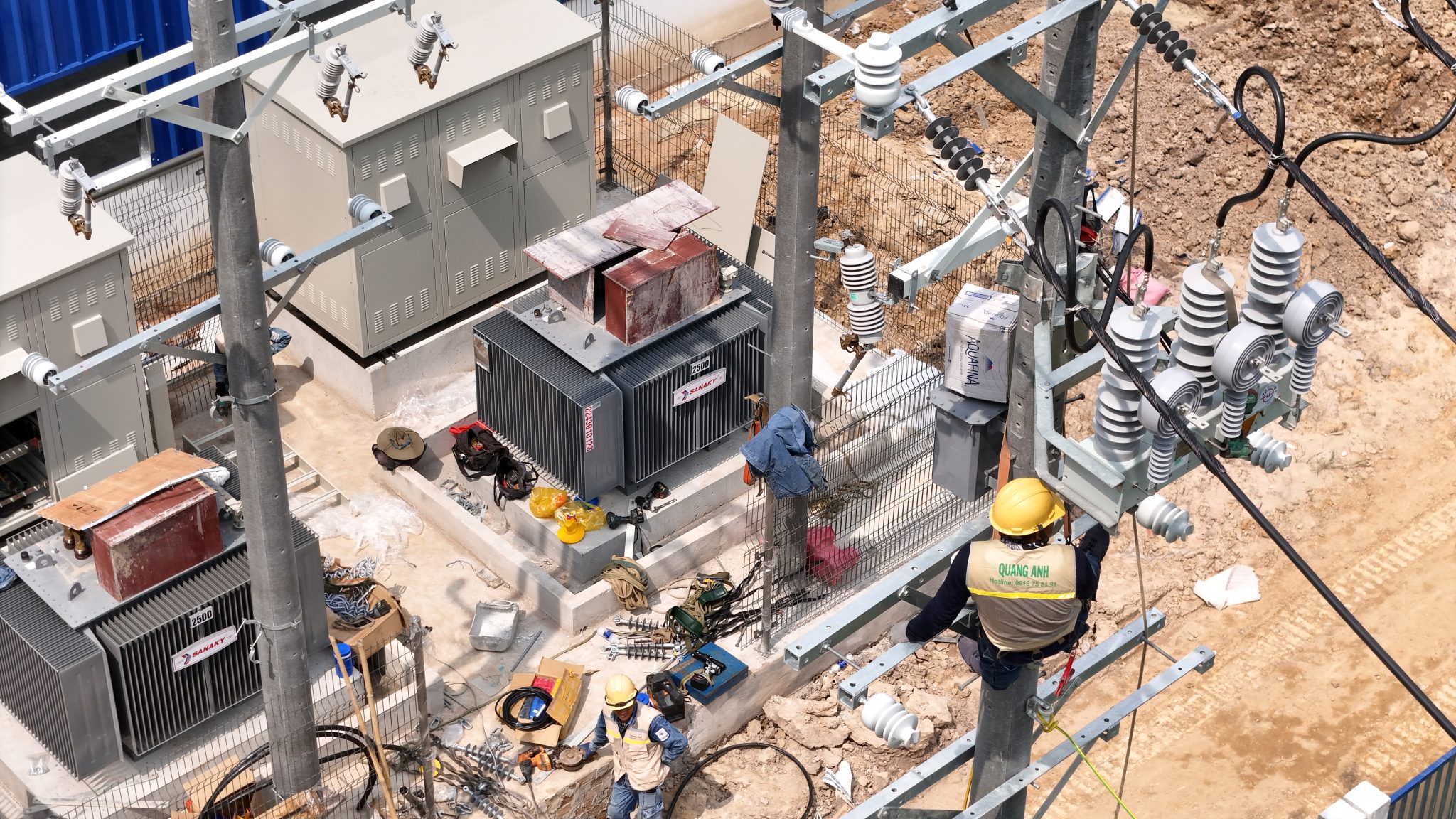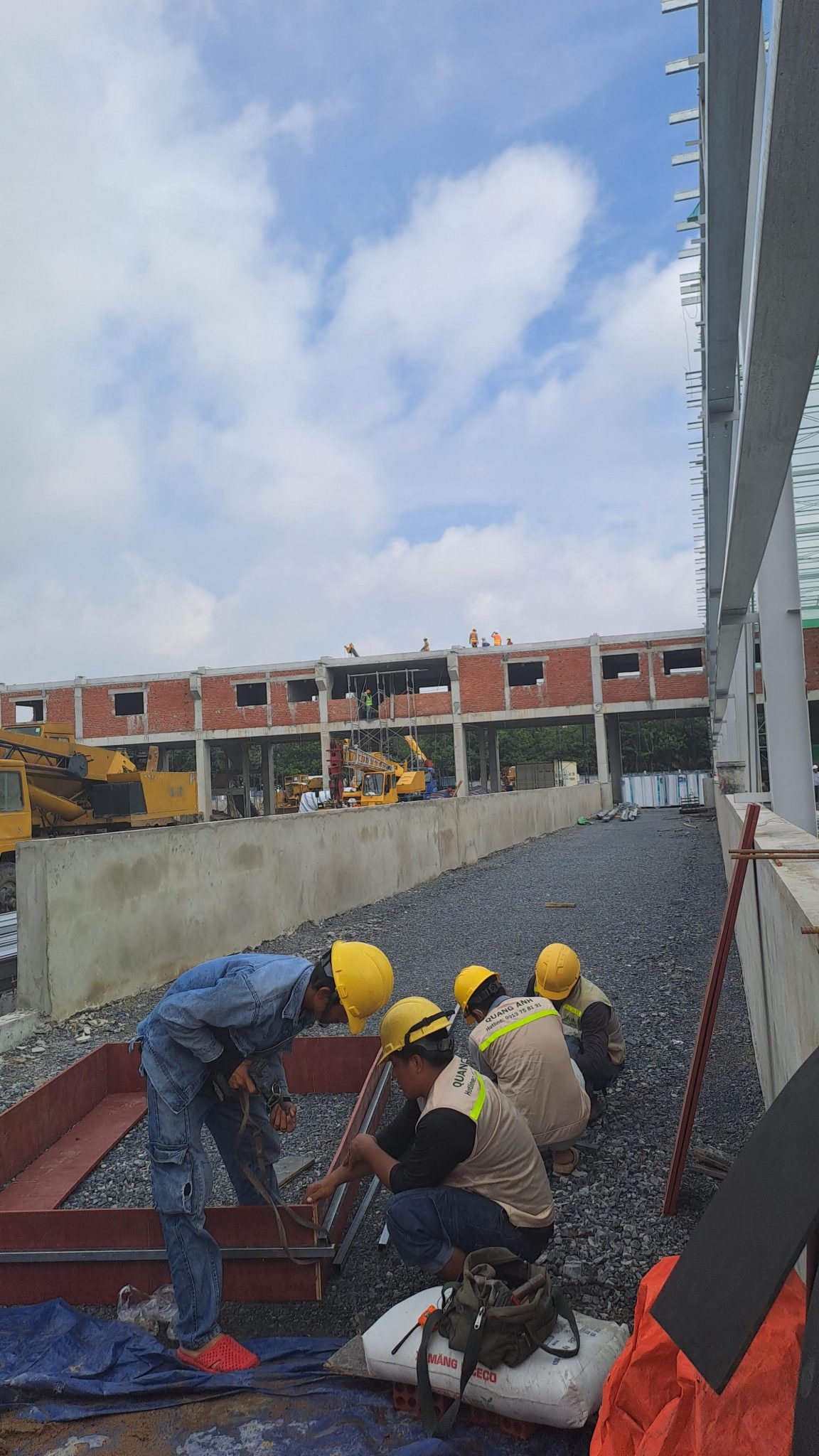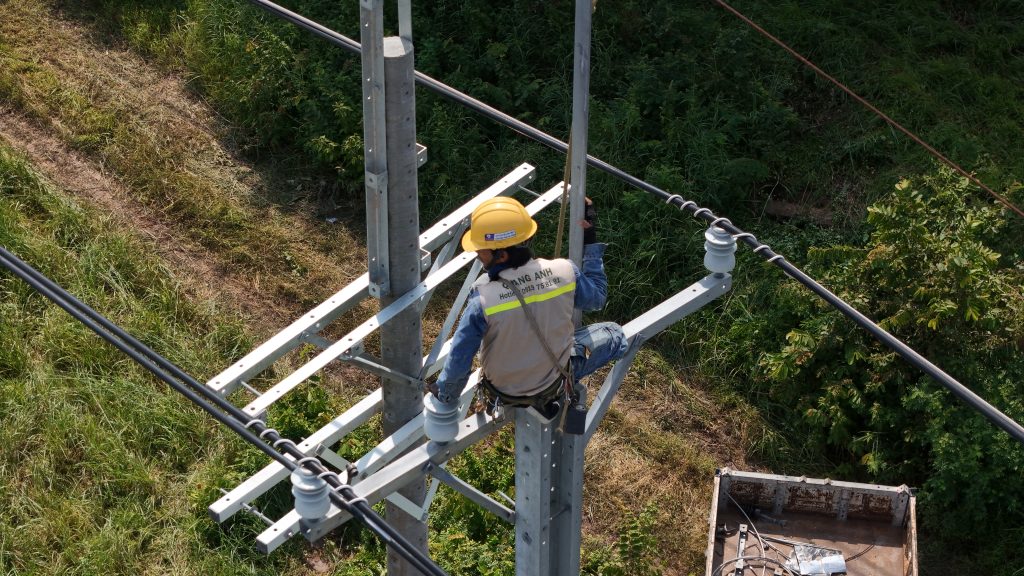News
Industrial Electrical System Installation: Procedures, Equipment, and Modern Challenges
The installation of industrial electrical systems requires a detailed process and adherence to high technical standards to ensure safety and efficiency.
Industrial Electrical System Installation Process
Installing industrial electrical systems requires meticulous preparation and a clear process. It begins with preparing equipment like transformers, factory switchboards, and protective equipment such as circuit breakers and relays. Following this, the site is surveyed to measure the actual needs and analyze the customer’s electrical requirements. Finally, the design of drawings is made following IEC 60364 standards or TCVN to ensure safety and cost optimization. Each step in this process requires careful monitoring to ensure accuracy and safety.
Installing an industrial electrical system is a complex process, demanding a combination of technical skill and safety. To ensure the industrial electrical system operates efficiently and sustainably, the main steps in the installation process outlined below must be followed:
- Prepare Equipment
- Ensure the necessary equipment for installation, such as transformers from Thibidi, switchboards from Mitsubishi, or protective equipment from Schneider, is adequately prepared for smooth execution.
- Staff must be fully equipped with personal protective equipment to ensure safety.
- Conduct Site Survey
- Gather and process information about the electrical usage demands and current field conditions.
- Carry out an actual site survey to plan effective and appropriate construction.
- Design Electrical System Drawings
- Based on survey data, draft detailed electrical drawings, adhering to IEC 60364 standards to ensure electrical system safety and cost optimization.
- Analyze and adjust the drawings for optimal system performance.
- Installation Execution
- Conduct installation according to approved designs, prioritizing compliance with safety standards for electrical systems.
- Ensure the safety of both workers and equipment throughout the installation process.
- Acceptance and Inspection
- After installation, the system undergoes thorough inspection and trial runs to ensure stable operation.
- Complete handover procedures and gather feedback from clients to improve service quality.
Optimizing installation and operational costs while strictly adhering to technical standards are crucial factors to ensure the long-term success of any industrial electrical system.

Specialized Equipment and Materials in Electrical System Installation
In installing industrial electrical systems, the use of specialized equipment and materials is very important. Power distribution systems such as main distribution boards (MSB), motor control centers (MCC), and standby generators are indispensable components. Protective equipment such as residual current circuit breakers (ELCB) and surge protection systems must also be installed to ensure safety. Cable selection also plays a critical role, with types such as XLPE underground cables and high heat-resistant insulative cables being preferred in industrial environments.
Specialized equipment and materials in electrical system installation play an essential role in both industrial and residential settings. Ensuring safety and performance requires appropriate choices of equipment and materials.
Residential electrical equipment includes:
- Switches, circuit breakers, fuses: These devices protect the circuit by automatically disconnecting when an overload or short circuit is detected.
- Electric meters: Used to measure electric consumption, a crucial factor for energy management.
- Sockets, switches: They control the distribution of electricity to each device.
- Electrical wires: Classified by cross-section and material such as copper or aluminum, they play a special role in electrical system design.
Industrial electrical equipment has distinct differences, particularly in high-voltage and medium-voltage applications. Among these:
-
High voltage equipment used on voltage networks from 74kV to 800kV:
-
High voltage circuit breakers: Disconnect the circuit at ultra-high voltage by combining SF6 or vacuum.
-
Current transformers (CT) and isolating circuit breakers: Protect systems from faults by measuring current and creating safe maintenance distances.
-
Medium voltage equipment also includes optimal choices like:
-
Reclosers and contactors: Automatically reconnect the circuit after a short circuit incident.
-
Surge protective devices (SPD): Protect against electrical surges caused by lightning or switching operations.
-
Voltage transformers (VT/PT): Step down the voltage for safe metering and monitoring.
Mechanical and electrical (M&E) materials are equally important:
- Ventilation and insulation ducts: Made from heat-resistant materials like fiberglass that enhance HVAC system efficiency.
- Stainless steel bands and electrical cabinets: Used for securing and protecting in harsh environments, with cabinets typically made from galvanized steel or fire-resistant composite.
Dedicated electrical cabinets:
- Distribution board (DB): Distribute power to sub-circuits, integrating devices like MCCB/RCCB.
- Motor control centers (MCC): Control three-phase motors and effectively protect them.
- Reactive power compensation cabinets: Reduce power loss and enhance efficiency through capacitor banks.
Additionally, installation support materials:
- Copper/aluminum busbars are the main conductive components in many distribution board applications.
- Insulation silicone plays an important role in ensuring joint safety.
- PVC/PPR conduit pipes: Protect electrical wires from environmental hazards.
Standards and technologies are also applied clearly:
- Insulative materials must withstand atmospheric overvoltage per IEC 62271 standards.
- IoT measurement technology with temperature/humidity sensors supports efficient remote monitoring.

Challenges and Modern Trends in Industrial Electrical Systems
The installation of industrial electrical systems always comes with challenges like system complexity and safety risks from incorrect load calculations or harsh weather conditions. Investment costs are also crucial when dealing with large capacity systems requiring high-grade materials and highly specialized personnel. However, modern trends such as the use of variable frequency drives (VFD) for motors and dimmable industrial LED lights are effectively helping to save energy. Furthermore, integrating IoT sensors for monitoring and automatic load balancing is a prominent trend in the industry.
Amidst rapid development, Vietnam’s industrial electrical systems face significant challenges. One of the main challenges is the imbalance between supply and demand for electricity. Especially in the North, the lack of new power sources has led to the transmission from other areas, placing immense pressure on the power grid. This is a major issue in the current industrial electrical system trends.
Additionally, electricity demand is rapidly increasing due to industrial and residential growth. This necessitates continuous upgrades of existing systems to meet increasing demand. In contrast, traditional energy sources like water and fossil fuels are gradually depleting, forcing a shift towards renewable energy to ensure long-term stability.
In this context, electricity pricing policies and reinvestment in the system are critical aspects that need attention. To maintain and develop the electric grid sustainably, a reasonable electricity pricing mechanism is required to mobilize strong financial resources.
In terms of modern trends, the adoption of renewable energy is being emphasized. Sources like solar and wind energy contribute to reducing reliance on fossil fuels and minimizing negative environmental impacts. Concurrently, the development of smart grids is a significant step that enhances the efficiency and flexibility of the system, thanks to the integration of advanced edge computing and IoT technology.
Alongside this, digital integration and data analysis help manage and monitor electrical systems more effectively. This allows accurate predictions of electricity demands and optimizes distribution. Investing in new technology infrastructure such as smart substations and microgrids is also becoming an inevitable trend for addressing current challenges, ensuring sustainable advancements in industrial electrical systems.
Technologies like VFD inverters not only optimize energy consumption but also help manage motors more effectively. The ability to automatically manage loads greatly contributes to balancing electricity supply and demand, thus reducing stress on the grid and enhancing the overall system’s stability.

The installation of industrial electrical systems not only demands accurate processes and compliance with technical standards but also brings significant benefits in terms of technology, investment, and strategy. Modern trends like integrating IoT sensors and energy optimization contribute to enhancing operational efficiency, reducing costs, and improving safety.
For optimal industrial electrical system solutions, contact QuangAnhcons via hotline: +84 9 1975 8191.
QuangAnhcons offers industrial electrical system installation services to international standards, ensuring high safety and efficiency, including comprehensive surveying, design, installation, and maintenance services.

 Tiếng Việt
Tiếng Việt 简体中文
简体中文 Deutsch
Deutsch 日本語
日本語 한국어
한국어 ไทย
ไทย Русский
Русский Français
Français
